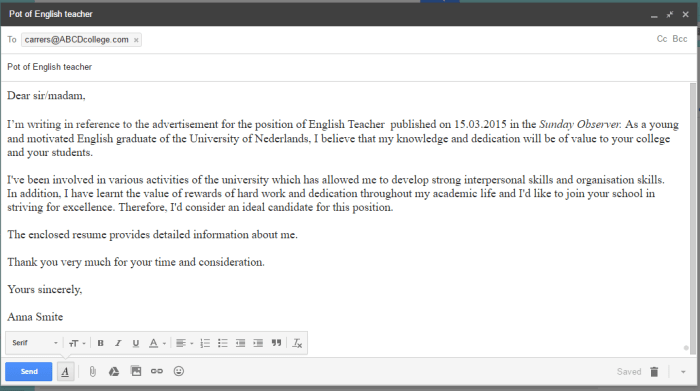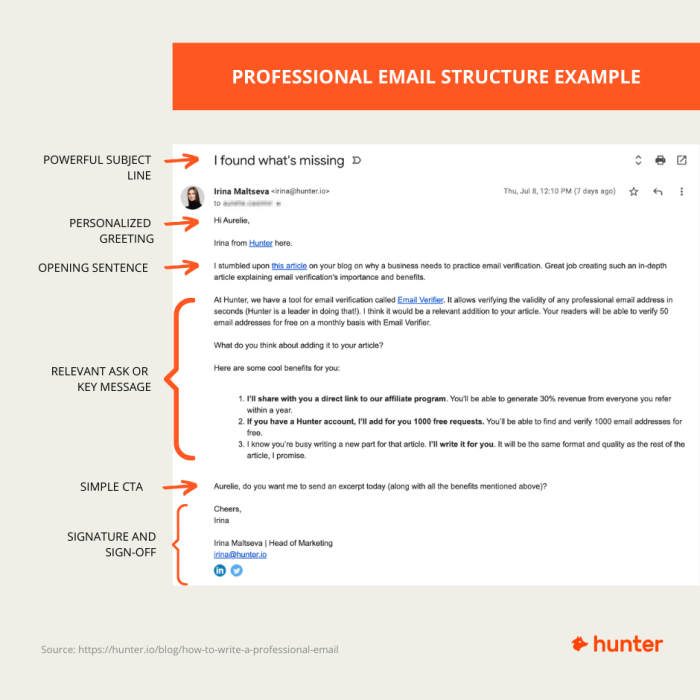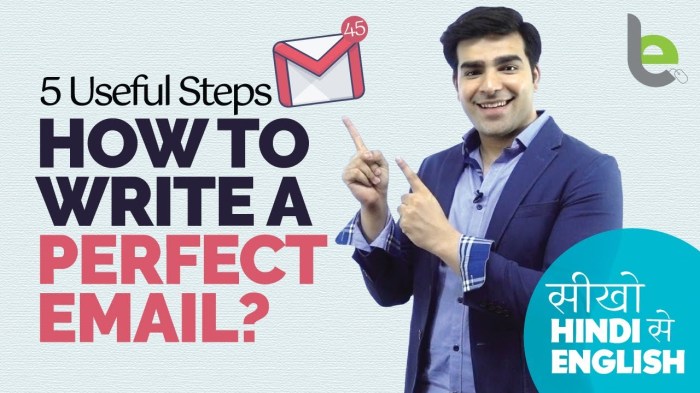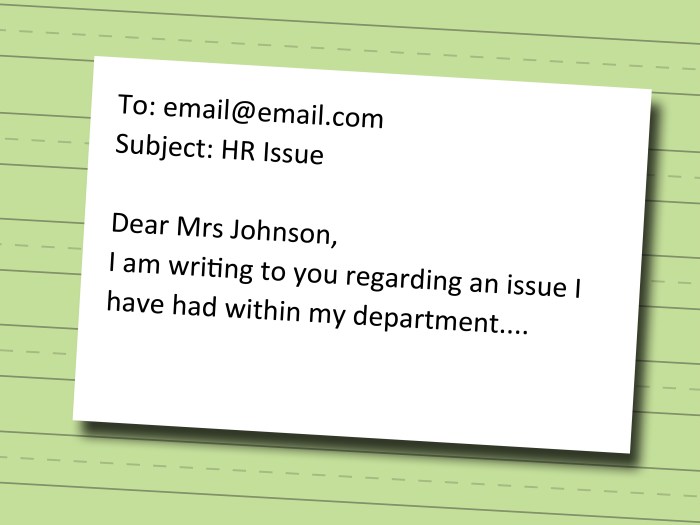Embark on a journey to mastering email communication with How to Write the Perfect Email in 5 Simple Steps, where we unravel the secrets to crafting compelling and effective emails.
Learn about the crucial elements that make up a well-written email and how to tailor your message to captivate your audience effortlessly.
Steps to Writing the Perfect Email

In today’s fast-paced digital world, knowing how to craft the perfect email can make all the difference in getting your message across effectively. Follow these simple steps to ensure your emails are professional, concise, and attention-grabbing.
The Importance of the Subject Line
The subject line is the first thing recipients see, so make it count. Keep it short, clear, and engaging to grab the reader’s attention. Avoid long-winded or vague subject lines that might get overlooked in a crowded inbox.
- Be specific and relevant to the content of your email.
- Avoid using all caps or exclamation points, as they can come across as spammy.
- Include s that will help your email stand out in search filters.
Crafting a Clear and Concise Message Body
Once you’ve hooked your reader with a compelling subject line, it’s crucial to deliver your message clearly and concisely in the body of the email. Keep paragraphs short and to the point, using bullet points or numbered lists for easy readability.
- Avoid lengthy paragraphs that can overwhelm the reader.
- Use subheadings to break up the content and guide the reader through your message.
- Stick to one main idea per paragraph to avoid confusion.
The Significance of Proper Formatting
Proper formatting can make a world of difference in how your email is perceived. Use a professional font, keep the text left-aligned, and use bold or italics sparingly to emphasize important points. Consider using bullet points, numbered lists, or tables for organizing information clearly.
- Choose a font that is easy to read, such as Arial or Times New Roman.
- Avoid using bright colors or distracting backgrounds that can make your email hard to read.
- Proofread your email for spelling and grammar errors before hitting send.
Examples of Effective Email Openings and Closings
A strong opening and closing can leave a lasting impression on the recipient. Consider starting with a friendly greeting and a brief introduction of yourself or the purpose of the email. In the closing, thank the recipient for their time and include a polite sign-off.
“Hi [Recipient’s Name], I hope this email finds you well.”
“Thank you for considering my proposal. I look forward to hearing from you soon.”
Understanding Your Audience

When it comes to writing the perfect email, understanding your audience is key. Tailoring your message to suit the recipient can significantly increase engagement and response rates. Whether you’re communicating with clients, colleagues, or supervisors, adjusting your language and tone can make a big difference in how your message is received.
Identify the Target Audience
To effectively communicate with your audience, it’s important to first identify who they are. Consider factors such as their role, level of familiarity with the topic, and their preferences. This will help you craft a message that resonates with them on a personal level.
Use of Personalization
Personalization can go a long way in making your email stand out. Addressing the recipient by their name, referencing previous interactions, or acknowledging their specific needs can create a sense of connection and relevance. This can lead to higher engagement and a more positive response.
Strategies for Addressing Different Recipient Types
When communicating with clients, it’s important to be professional, yet approachable. Use clear and concise language, and focus on addressing their needs and concerns. For colleagues, a friendly and collaborative tone can help foster teamwork and cooperation. When writing to supervisors, maintain a respectful and informative tone, keeping them updated on important matters.
Examples of Language and Tone Adjustments
– For clients: “Dear [Client’s Name], I wanted to follow up on our discussion earlier regarding [specific project or topic].”
– For colleagues: “Hi [Colleague’s Name], I appreciate your input on the latest project. Let’s collaborate to finalize the details.”
– For supervisors: “Dear [Supervisor’s Name], I am writing to update you on the progress of the current project and address any concerns you may have.”
Polishing Your Email

When it comes to writing the perfect email, polishing is a crucial step that can make or break the effectiveness of your message. This involves checking for grammar and spelling errors, using professional language and etiquette, creating a compelling call-to-action, and crafting an effective email signature.
Importance of Proofreading
Proofreading your email for grammar and spelling errors is essential to ensure that your message is clear, professional, and error-free. Typos and grammatical mistakes can detract from your credibility and professionalism, so take the time to carefully review your email before hitting send.
Professional Language and Etiquette
Using professional language and etiquette in your email is key to making a positive impression on your recipient. Avoid slang, abbreviations, or overly casual language, and make sure to address the recipient respectfully. Remember to use proper salutations and closings, and always proofread for tone and clarity.
Creating a Compelling Call-to-Action
A compelling call-to-action is essential to guide your recipient on the next steps they should take after reading your email. Whether it’s scheduling a meeting, making a purchase, or responding to a request, make sure your call-to-action is clear, specific, and easy to follow.
Effective Email Signatures
An effective email signature can serve as a powerful tool to provide additional information about yourself or your company. Include your name, title, contact information, and any relevant links or social media profiles. Keep it concise, professional, and visually appealing to leave a lasting impression on your recipient.
Epilogue

Master the art of email writing and watch your communication skills soar to new heights with the invaluable insights provided in How to Write the Perfect Email in 5 Simple Steps.